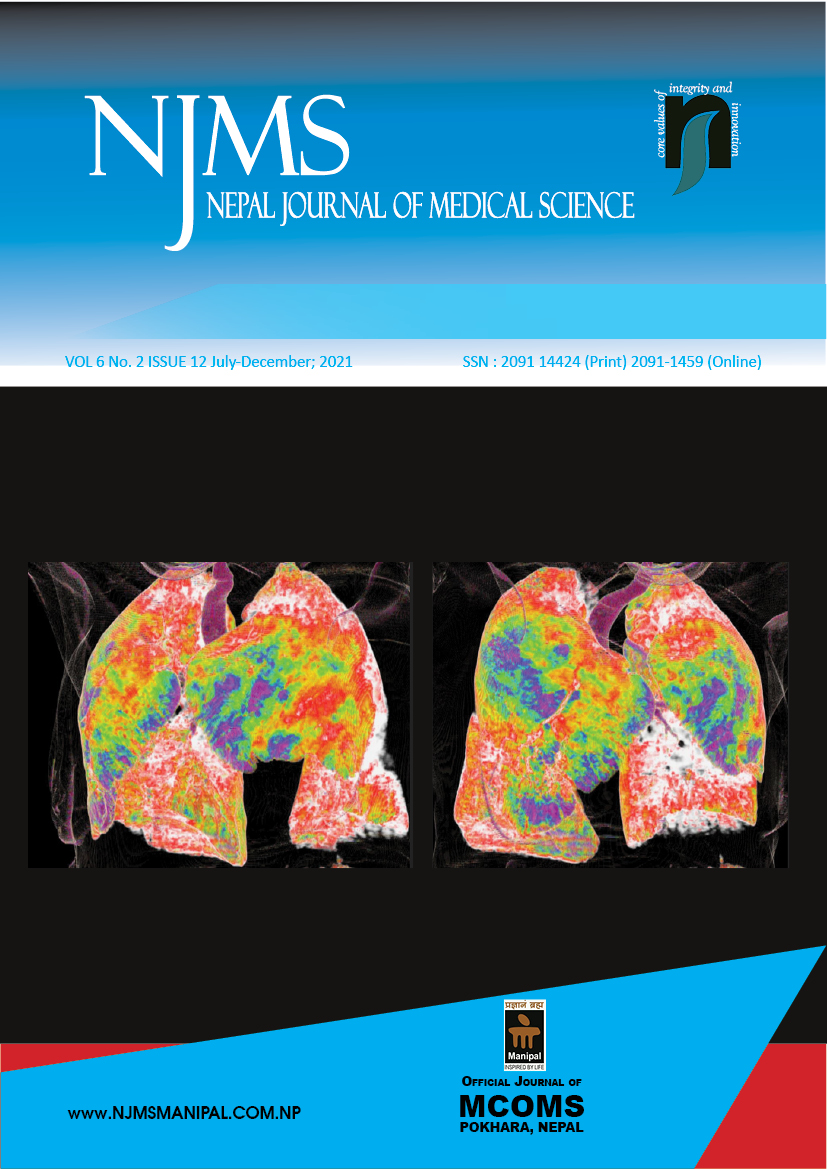Comparison Between Standard Percutaneous Nephrolithotomy Versus Tubeless Percutaneous Nephrolithotomy
DOI:
https://doi.org/10.3126/njms.v6i2.42401Keywords:
Analgesics, Kidney Calculi, Nephrolithotomy, PercutaneousAbstract
Introduction:
Percutaneous nephrolithotomy (PCNL) is the most commonly done procedure for the treatment of large and complex renal calculi. Tubeless PCNL has been advocated in selected patients as it is thought to reduce the post-operative analgesia requirement and postoperative hospital stay.
Methods:
A retrospective comparative study was carried out in 100 patients who underwent PCNL between January 2019 to July 2020. Patients were divided into two groups; Group A (Tubeless PCNL) and Group B (Standard PCNL) and were compared in terms of stone-free rate, operative time, postoperative analgesic requirement, postoperative hospital stay, postoperative blood transfusion, and postoperative complication. Statistical analysis was done using SPSS software (version24). The Chi-square test and Student’s t-test were applied for the calculation of variables and a p-value of <0.05 was considered significant.
Results:
Stone clearance in Group A was higher than Group B (92% vs 88%, p= 0.51). The overall complication was significantly less in Group A (p=0.03). The mean drop in post-operative hemoglobin in Group A was 0.75 ± 0.26 mg/dl and in Group B was 0.90 ± 0.47g/dl (p=0.44). Post-operative blood transfusion was required in 6 patients in Group A and 14 patients with Group B (p=0.26). The mean operating time in minutes was less in Group A (47.10±5.67, p = 0.048). The requirement of post-operative analgesic (Tramadol) was higher in Group B (172.50 ± 40.75mg. vs 142.31 ± 34.44, (p=0.02). The mean duration of hospital stay for Group A was 3.54 ± 0.91 and Group B was 4.56 ± 0.91 days (p<0.001).
Conclusion:
Tubeless PCNL is a safe, effective, and feasible procedure for renal stones. It decreases the length of hospital stay, the requirement of blood transfusion, and the need for postoperative analgesia.
Downloads
Downloads
Published
How to Cite
Issue
Section
License
Copyright (c) 2022 Nepal Journal of Medical Sciences

This work is licensed under a Creative Commons Attribution 4.0 International License.
Copyright © by Nepal Journal of Medical Sciences. The ideas and opinions expressed by authors of articles summarized, quoted, or published in full text in this Journal represents only opinions of authors and do not necessarily reflect the official policy of Nepal Journal of Medical Sciences or the institute with which the author(s) is (are) affiliated, unless so specified.




